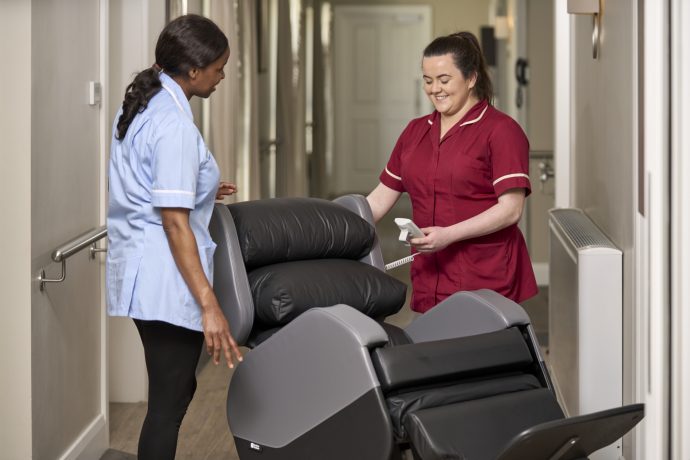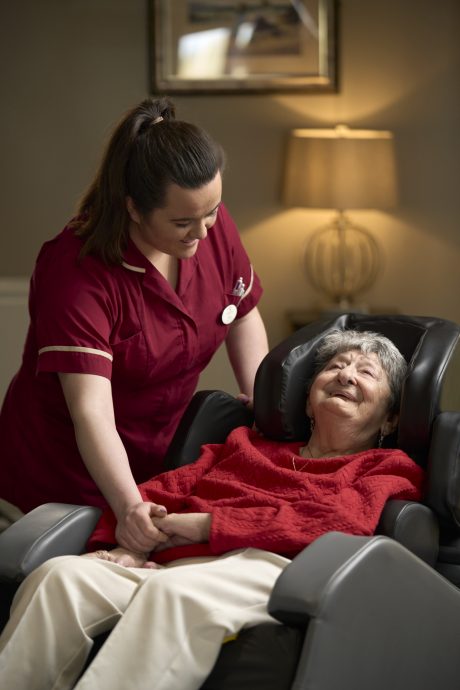
2nd September 2025


Let our online product finder guide you through our simple steps to choose the chairs that best meet your patient’s needs.
Seating Solution FinderThe Envelo cushion provides excellent pressure redistribution and comes as standard on all Seating Matters chairs, meeting the clinical needs of most clients.
Explore Envelo RangeSeating Matters specialises in clinical, therapeutic seating solutions designed to improve patient care and safety, offering products for pressure injury prevention, postural support, and mobility assistance in healthcare settings.
Learn MoreDiscover how Seating Matters has transformed lives with our innovative seating solutions - read our inspiring customer success stories now!
Customer StoriesUsed in academia, in clinical practice and with caregivers around the world to guide their practices around specialist seating.
Download Free HandbookSome of our more frequent complaints revolved around seat adjustments being too complicated, chairs that were far too heavy or difficult to steer. But the real challenge that stood out amongst OTs, PTs, caregivers and family members is performing safe and efficient patient transfers from the chair to bed, bath, chair, etc.
With this in mind, we made it our mission to design our therapeutic chairs to make transfers simpler, safer, and less time consuming. Transfers are uncomfortable for a variety of reasons, and we wanted to create a better experience for everyone involved.
When discussing transfers, we usually focus on three main types: side, stand or hoist transfers. In each type of transfer the following should be considered:
Patients who use a wheelchair might be able to side transfer with the use of a sliding board or with assistance from a caregiver.
Typically patients will need to move from their wheelchair to a more comfortable chair, or bed. This can be a difficult process if the chair has not been designed sympathetically with such transfers in mind.
Suitable for clients who still have the ability to bear weight and take weight through both feet evenly. This type of transfer is suitable for those with a moderate level of independence that just need some assistance.

This type of transfer is for immobile patients. In this case a hoist or lift is the sole option to safely move patients from place to place.
In this circumstance, there are two ways in which a person can be hoisted:
Just be sure that the wheels of the lift device fit underneath the chair in which the patient is being transferred to. Sometimes being able to tilt the chair slightly can help position the patient in the chair. Any slings should be removed from under the patient so that the weight of their body can be distributed through the chair adequately. We had the pleasure of working with Aideen Gallagher OT from Risk Managed on producing a series of transfer videos demonstrating all three types of transfers. Please watch the first in our series below, where we focus on side transfers.
Seating Matters Phoenix and Sorrento chairs feature removable arms. They can be removed in seconds, without the use of tools. This prevents large chair arms from hindering a transfer. Simply locate and loosen the thumb screws on the front and back of each chair arm. Slowly pull the arm out of its socket and ensure the loose arm is left in a safe place to avoid tripping.
For those with a good degree of independence that can transfer laterally, drop down arms are an excellent option - one that can be adjusted by the chair user themselves.
Sign up to our mailing list to get practical tips and latest research delivered to your inbox!
Take the next step to achieve clinical excellence and a 24 hour package of care for patients.

Arrange a free, no obligation seating consultation with your local Seating Specialist.

Schedule a call at a time that suits you to speak with our experts.

Arrange a free, no obligation trial of clinical, therapeutic seating

2nd September 2025

15th August 2025

15th August 2025